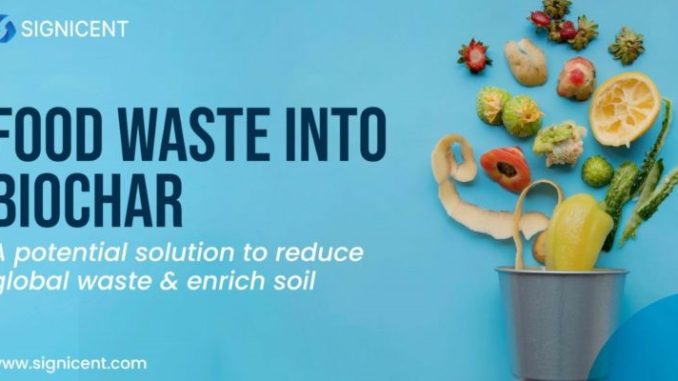
Food waste is a global paradox of alarming proportions. While millions suffer from hunger and malnutrition, a staggering one-third of all food produced for human consumption—approximately 1.3 billion tons annually—is either lost or wasted along the supply chain. This colossal inefficiency not only represents a moral failing but also carries immense economic and environmental costs, contributing significantly to greenhouse gas emissions, squandering precious resources like water and land, and impacting agricultural profitability. Fortunately, as the world grapples with feeding a growing population sustainably, the burgeoning field of smart agriculture offers a powerful suite of technological solutions that can combat food waste at virtually every stage, from cultivation and harvesting to processing and distribution.
At its heart, smart agriculture leverages cutting-edge technologies like the Internet of Things (IoT), artificial intelligence (AI), big data analytics, and automation to create more efficient, precise, and responsive farming systems. One of the primary areas where this intelligence can curb waste is directly at the farm level, particularly in the pre-harvest and harvest phases. Traditional farming often involves broad-stroke approaches to irrigation and fertilization, leading to over- or under-watering and nutrient application, which can stress crops, reduce yields, or make them susceptible to disease and pests. Smart sensors deployed in fields, however, can provide hyper-localized data on soil moisture, nutrient levels, and even plant health. This real-time information allows farmers to apply water and fertilizers precisely where and when needed, optimizing growth conditions and reducing crop loss due to environmental stress or improper nourishment. Imagine a rice paddy in Thailand, where smart sensors can tell a farmer exactly which sections need more water, preventing both parched and waterlogged areas that could diminish yield.
Furthermore, smart agriculture significantly enhances pest and disease management, a major contributor to crop loss. Drones equipped with multispectral cameras can quickly identify early signs of plant stress, disease outbreaks, or pest infestations across vast fields, long before they become visible to the human eye. AI algorithms can then analyze this imagery, providing immediate, actionable insights to farmers. This precision allows for targeted intervention, reducing the need for widespread, often wasteful, application of pesticides and herbicides. By addressing issues early and with pinpoint accuracy, farmers can save a greater percentage of their harvest from spoilage or becoming unmarketable due to blemishes or damage, directly reducing pre-harvest waste.
The harvest phase itself is another critical juncture for waste reduction, and smart agriculture offers solutions here too. Automated harvesting machinery, guided by GPS and equipped with advanced sensors, can operate with greater precision than manual labor, minimizing damage to crops during collection. More importantly, AI-driven sorting and grading systems can be deployed immediately post-harvest. These systems can rapidly assess produce quality, identifying items suitable for prime sale, those for processing (like juices or purees), and those that might be perfectly edible but cosmetically imperfect, which can then be redirected to secondary markets or food banks, rather than being discarded. This intelligent sorting helps to maximize the value extracted from every harvested item.
Beyond the farm gate, smart agriculture’s influence extends into the supply chain. Cold chain management, critical for perishable goods, can be vastly improved with IoT sensors tracking temperature, humidity, and even vibration during transit. Anomalies can trigger immediate alerts, allowing for corrective action before spoilage occurs. This transparency and real-time monitoring reduce losses from improper storage or transportation conditions, ensuring that more produce reaches consumers in optimal condition. For instance, sensors in shipping containers moving fresh durians from a farm to a city market can provide crucial data, preventing waste from temperature fluctuations.
Moreover, smart agriculture contributes to better forecasting and demand planning. By integrating data from farms (predicted yields, harvest times) with market demand signals, weather patterns, and historical consumption trends, AI-powered analytics can provide more accurate forecasts for supply and demand. This predictive capability helps to minimize overproduction, a significant driver of food waste, by aligning agricultural output more closely with actual market needs. It also informs retailers and distributors, allowing them to optimize inventory management and reduce the likelihood of perishable goods expiring on shelves.
While challenges remain, including the initial investment costs for technology and the need for digital literacy among farmers, the overarching trend is clear. Smart agriculture is not just about boosting yields; it’s fundamentally about fostering efficiency, precision, and resilience across the entire food system. By mitigating losses at every vulnerable point—from preventing crop damage in the field and optimizing harvest efficiency to ensuring proper post-harvest handling and aligning supply with demand—smart agricultural practices offer a powerful and scalable means to combat the global scourge of food waste. This technological revolution in farming represents a critical step towards a more sustainable, equitable, and food-secure future for everyone.